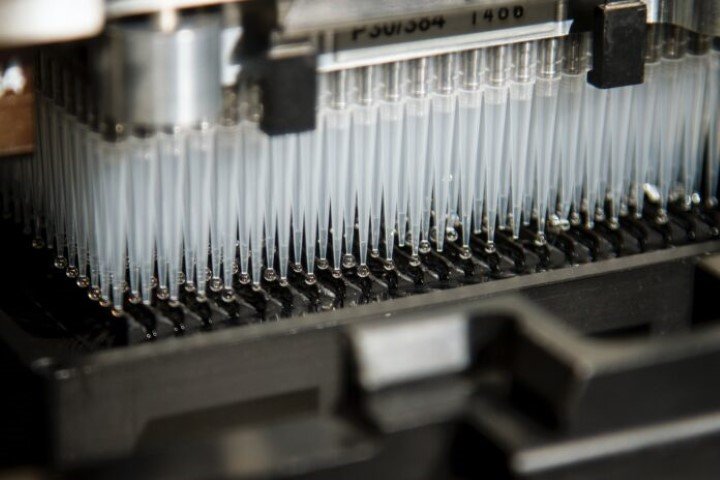What’s Next For Direct-To-Consumer Genetic Testing

The Human Genome Project, an international scientific cooperation on discovering the human genome, began in 1990. The goal of the undertaking was to identify the DNA sequence of the entire human genome. I was a medical student when the completion of the Human Genome Project was announced in 2003. I assumed, just like everyone else in the medical community, that THIS WOULD CHANGE EVERYTHING.
Two decades have passed since then. And although scientific progress is still outstanding, genetic testing did not become the new norm in healthcare. I want to know why.
I’ve had my genome and microbiome sequenced. I have also tested and reviewed over six types of direct-to-consumer genetic tests to experience what patients would go through using such services. I have learnt a lot about how my body works, what my challenges are, and with some follow-up, it also became clear what these meant for my everyday life. But these tests leave at least as much room for misinterpretation as they help to understand the challenges. As a medical doctor with a PhD in genomics, I struggled with understanding the results and had to consult with my GP and a genetic counsellor. Genetic testing, however, should not be so difficult.
Why isn’t genetic testing the norm in healthcare?
In 2003 when I heard about the completion of the Human Genome Project, I would’ve bet that in 2021, genetic testing will be done as a standard hospital procedure – preferably as soon as a baby is born. I thought (at least) that we would be diagnosing patients using genome sequencing. Well, although the Project ended in 2003, the work was NOT entirely completed. In fact, the last 8 per cent that remained undiscovered that time was only unearthed a few weeks ago, when a group of scientists posted a pre-print.
Technology at the time could not handle the length of information in the most difficult sequence regions. In 2021, this dedicated group of scientists used novel technologies for reading out DNA. And as it now seems, they have indeed solved the remaining 8%. This, however, still won’t mean genetic testing will be more widely available.
What are genetic tests good for?
In principle, genetic testing companies offer multiple solutions for gene sequencing. As I wrote earlier in this article, “the difference between genetic tests and whole genome sequencing is like that of a seat on the bus or having your own car. With the first, your route is kinda determined and you only have one seat – it’s partial. With a car, you have infinite chances where to go and you own the entire vehicle.”
The first, basic level of genetic testing thus leads to family history and ancestry. It shows you where you have relatives based on your DNA, might give you an oral microbiome report; or confirms whether you have a gene causing hairy back or your urine smell like asparagus after eating the vegetable. This level fulfils the general curiosity but has little diagnostic value in terms of your own health. Such tests cost anything between US$ 60-300, and what exactly they cover, depends on the provider.
A “real” genomic sentencing takes off at around US$ 1000, decoding your full DNA with detailed reports and analyses. When I got my whole genome sequenced, I learnt a lot about possible traits and conditions I might have. It was an interesting undertaking, but going through the resulting 163 pages of the report they gave me was a tough job. Making sense of it required skills I didn’t possess, so I ended up talking with my doctor about the results anyway. And before the results came, the 8 weeks of waiting (!!!) was plain nerve-wracking. But in the end, the report gave me a firm base to start fighting back and do whatever I can to protect myself from what my genes have prescribed.
Those huge waves of expectations after the Human Genome Project today calmed down as small drops in the ocean. These are the 7 most important obstacles genetic testing faces today:
1. Genetic testing is still too expensive
Genetic tests are not affordable for many. Depending on the complexity, it can cost anywhere between US$ 60 to 2,000. And these prices have not changed for a long while now. However, some insurances already cover some genetic testings. And in case if you have a family history of a certain genetic mutation, you can get tested for that alone, for cheaper.
2. Genetic testing is not a global service
Practically all consumer genetic testing companies work with external labs to do the testing. There’s an uneven distribution of labs being able to carry out whole genome sequencing. Small labs are often not up to the task or the workload.
3. It is astonishingly hard to choose which genetic test to do
With a PhD in genetics, I had a hard time choosing the right DNA test kit for myself and my family. It is also difficult to compare these tests as their packages and even their descriptions vary (and I’m not alone with these challenges). Global standardisation in testing, measuring and interpretation would come in handy.
4. Healthcare personnel find it hard to interpret the results of a DNA test
Although there are more and more medical professionals who can analyse the results of a genetic test and there is an increasing number of universities with such courses; there is still only a limited amount of healthcare professionals who can analyse a result of such a test.
5. Genetic testing lacks standards
Among a plethora of genetic companies, their reliability and effectiveness remain in question. There is currently no authority supervising their output or their practices.
6. Genetic testing today is for the “worried well”
Most companies don’t dive into the brass tacks of the outcomes. Advice like “eat healthy, workout more and socialise” isn’t helpful, and companies that stirred the most buzz around themselves (like 23andme) didn’t dive into analytics. Instead of providing tests of clinical significance, they fulfilled the general curiosity of ancestry and common issues. People, in general, tend to get more anxious than happy with these reports; as they cannot untangle or make use of what they get.
7. Genetic test results can be given to third parties
Many fear that their genetic data will end up at the desk of an insurance company; or their boss’ desk (or for potential use by law enforcement). Genetic companies have not yet proven that this won’t be the case. In the States, the Genetic Information Nondiscrimination Act (GINA) is a good first step towards a sound regulation of genetic testing.
What’s Next For Genetic Testing?
To sum it up, we probably need to lower our expectations and be happy with what we have; like when genomic tests help in certain medical conditions. We need to work very closely with medical professionals and genetic counsellors to make use of test results (or have them interpret what your results actually mean). Exploring your genetic background isn’t so sexy anymore. Hope it will be again one day.
Until then, what I’ll do is to make use of the results I received and discussed with my GP and my genetic counsellor, grab my wearables and trackers, and make sure I get stronger wherever I am threatened by my own genes.





